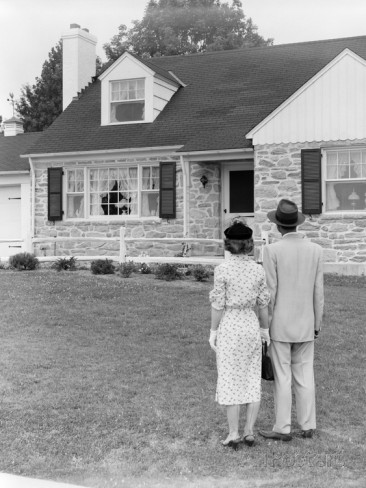Key Highlights
- Predictable, Stable Cash Flow: Nationwide occupancy remains strong at ~94.6%, ensuring consistent rental income and annual rent growth averaging 4–5%.
- Resilient Through Market Cycles: SFR rent growth has never turned negative nationally, even during recessions, offering a defensive layer to investor portfolios.
- Scalable Investment Strategy: Investors can grow portfolios efficiently, leveraging technology and professional management to handle multiple properties across markets.
- Strategic Tax Advantages: Tools like 1031 like-kind exchanges, depreciation, and mortgage interest deductions enable tax-efficient wealth-building.
- Tailwinds from Demographics & Affordability: Millennials entering family formation, downsizing Boomers, and housing affordability challenges drive long-term SFR demand in heartland markets.
- High-Yield Opportunities in Non-Coastal Markets: Cities like Indianapolis, Birmingham, and Chattanooga offer attractive cap rates and potential for strong cash-on-cash returns.
Introduction
Single-family rentals (SFRs) have emerged as a standout asset class in U.S. real estate. And for a good reason. Investors are increasingly drawn to SFRs for their blend of predictable income, resilience through market cycles, and strong growth prospects. Unlike flashier coastal properties, rental homes in heartland markets (think Chattanooga, Birmingham, Indianapolis, and beyond) quietly deliver steady returns backed by solid fundamentals. Below, we break down the key reasons why SFRs have become a core strategy, supporting each point with data and examples from these non-coastal markets.

1. Predictable, Stable Cash Flow
SFR investments are known for producing predictable, stable cash flow. A big factor is consistently high occupancy. Nationwide, single-family rentals maintain occupancy in the mid-90% range – recently about 94.6% occupied as of Q2 2024. Even at the height of the pandemic home-buying frenzy, SFR demand remained robust; in fact, the sector hit a record 95.3% occupancy in mid-2021. This means rental homes are rarely sitting empty, ensuring landlords collect steady rent checks month after month. Crucially, rents for SFRs tend to rise a bit each year, providing built-in growth on that cash flow. Before 2020, single-family rents were climbing about 4.4% annually on average, and despite recent market normalization, they’re still up 4.7% year-over-year as of mid-2024. In other words, even in “normal” times SFR income has a gentle upward slope. Many individual markets see even stronger gains – for example, Birmingham, AL’s single-family rents jumped roughly 5.5% in the past year, outpacing the national average. This combination of near-full occupancy and steady rent growth gives SFR investors a reliable and growing income stream that few other real estate sectors can match.
Source: Arbor.com

2. Resilience Through Market Cycles
Beyond just consistency, SFRs have proven remarkably resilient when economic storms hit. History shows that single-family rentals can weather downturns with less volatility than other property types. In fact, SFR rent growth has never turned negative on a national basis, even during recessions. By contrast, apartment rents have dipped into year-over-year declines in past cycles, but SFRs managed to keep chugging along, albeit at a slower pace. It was evident in 2020: through the pandemic’s disruptions, single-family rental NOI (net operating income) actually stayed positive, whereas many commercial real estate sectors (and even multifamily apartments) saw income shrink or turn negative. High occupancy played a role here as well – even in tough times, families prioritize keeping a roof over their heads, and an affordable house for rent is often the preferred choice.
The upshot is that SFR investors enjoy a cushion of stability in their returns. Rent checks kept coming in 2008, 2020, and beyond, making SFR portfolios comparatively durable. This defensive quality, paired with the steady uptick of rents, gives SFRs a bond-like reliability plus growth – a very attractive profile in an uncertain world
Source: afire.org
3. Scalable Investment Strategy
Another advantage of single-family rental investing is its scalability. What began as a largely mom-and-pop, one-house-at-a-time endeavour has evolved into an institutional-scale strategy. Today, large investors own tens of thousands of rental homes across the country – proving you can efficiently scale up a diversified SFR portfolio. Technology and professional management have made it easier to handle scattered-site houses in bulk, so owning 50 or 500 homes is not as impractical as it once sounded. For individual investors, this means you can start with a single rental home and gradually grow into a sizable portfolio, reinvesting cash flows into the next property, then the next. Crucially, the performance doesn’t drop off as you expand – the asset class scales while still delivering competitive returns.
In many non-coastal markets, scaling an SFR strategy is particularly compelling because the yield-on-cost is attractive. Purchase prices (and development costs) are relatively low while rents are robust, leading to healthy cap rates. As of mid-2024, average SFR cap rates sit around 6.8%, the highest in six years and a notable uptick from the ultra-low ~5% caps seen in 2021. These higher yields give investors more breathing room to cover financing or reinvest. Notably, single-family rentals tend to offer a slight yield premium over comparable multifamily assets; since 2017, SFRs have consistently averaged about 0.4% higher cap rates than apartments, and that spread widened to over 1.0% post-2020. In practical terms, an SFR portfolio can often generate better cash-on-cash returns, helping fuel faster growth when those returns are redeployed. And the opportunity set is broad. One can acquire homes across multiple affordable cities to spread risk and tap into various local growth trends. For instance, Indianapolis currently leads major markets with nearly 7.7% annual SFR rent growth, showing that robust returns aren’t confined to the coasts. An investor who scales into a few “Indys” (think mid-sized, high-yield markets) can build substantial income and equity over time.
Source: arbor.com & afire.org

4. Strategic Advantages Beyond the Numbers
SFR investing also comes with powerful tax advantages that accelerate wealth-building. Chief among these is the 1031 like-kind exchange. Under IRS Code Section 1031, you can sell an investment property and buy another without paying capital gains tax on the sale – the tax is deferred by rolling the proceeds directly into the new property. Nearly all real estate qualifies as “like kind”, so an investor could swap one rental house for another, or even sell a duplex and buy a portfolio of single-family homes, all tax-free at the transaction level. This is a strategic game-changer: it means you can continually upgrade and scale your SFR holdings (for example, trading up from three houses into a small apartment, or vice-versa) without the drag of taxes eating away your gains. Many seasoned investors follow a “buy, rent, 1031, repeat” playbook – using exchanges to snowball a small property into a larger one, and so on, until they’ve amassed a significant portfolio. SFRs are an ideal vehicle for this because there’s a deep market to buy and sell into when you’re ready to make a move.
Beyond 1031 exchanges, SFR owners benefit from the usual real estate tax perks as well. Rental homes can be depreciated each year, often sheltering a good portion of the rental income from taxes. And interest on mortgages for SFR properties is tax-deductible, reducing the effective cost of leverage. Taken together, these advantages mean an SFR investment can be structured very tax-efficiently – boosting after-tax returns well above those of a comparable taxable investment. Smart use of these tools (again, 1031 being the star) lets investors keep more of their profits compounding within their portfolio, hastening the journey from a single rental to a thriving enterprise.
5. Affordability Trends & Demographic Tailwin
Perhaps the strongest long-term support for SFRs is the overwhelming demand tailwind created by housing affordability challenges and shifting demographics. America simply has a housing crunch, and it’s most acute for entry-level homes. In the decade after the 2008 crash, homebuilders under-produced millions of units, especially starter homes, and that deficit is still here in 2025. Consider that the share of new homes built under 1,800 square feet (a proxy for “starter home” size) and priced under $300,000 has plummeted by 85% since 2002. In 2022 the median new house cost $414,000, far out of reach for many first-time buyers. With mortgage rates climbing, the monthly cost of owning has surged even higher. The result: a generation of young families and professionals who can’t afford to buy in many markets, but still need the space and comfort of a single-family home. They’re increasingly turning to SFRs. Renting a house offers the yard, school district, and extra bedrooms they want, at a lower upfront cost and more flexibility than buying. It’s no surprise that about one-third of U.S. renter households live in single-family homes already, and that share is projected to grow (potentially reaching ~37% of renters by 2030). In plain terms, millions more Americans are expected to become SFR tenants in the coming years.
Demographic shifts reinforce this trend. The large millennial cohort is now entering its prime family formation stage, traditionally a time for moving into a suburban home. Many will rent longer before eventually buying, supporting SFR demand in the interim. At the same time, empty-nest Baby Boomers have shown a proclivity to downsize and rent for convenience, adding another layer of demand for single-level homes and condos to lease. Remote work has also untethered some households from high-cost coastal cities. Markets like Chattanooga and Birmingham, with their lower living costs and growing economies, have benefited from such inflows. (Chattanooga’s rental occupancy hit an astonishing ~99% in late 2021 amid a post-pandemic influx). These broader forces, high ownership costs, limited new supply of affordable homes, and the lifestyle preferences of renters, create a long runway for SFR demand. Landlords in well-chosen markets enjoy a tailwind of tenants, ensuring future rent growth and minimal vacancy. For investors, aligning with these macro trends means riding a wave that is likely to lift SFR values and revenues for years to come.
Sources: etnrealtors.com & pantheon.com
Conclusion
Investing in single-family rentals is not about chasing trends or hype, it’s about finding assets that perform reliably over time. For disciplined, data-informed investors, SFRs offer a path to consistent, compelling returns, portfolio resilience, and growth.
At Strand Capital, we believe that thoughtful SFR investments are a strategic approach to building wealth and stability for our investors.
Get in touch with us: https://strandcapitalholdings.com/contact-us/




